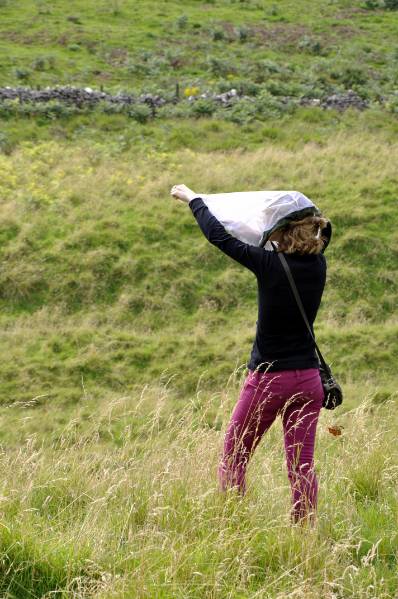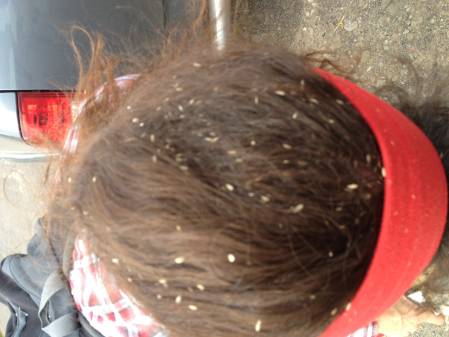Recently the Dipterists Forum along with the Natural History Museum ran an Introduction to Diptera Course down in Wells, Somerset. The intention was to not only introduce the major groups of flies, detailing their fantasticle attributes (that is a real word when applied to Diptera), but also to give them time to collect and curate their own collection.
I therefore found myself, after a large amount of preparation from various people in terms of bringing together laboratory and field equipment, producing booklets etc, and booking vehicles (although it did transpire that I was a little limited on the last one….), taking 7 willing volunteers from London down to the West Country (and into Cheddar Land). We had two cars, one that was rammed with equipment – the other rammed with people, and we drove off full of the joys that only flies can bring…
Roger Morris, Stuart Ball and Alan Stubbs and I were running the course. Roger and Stuart had been running introduction courses for a while and so were old hands at it, and had many, many boxes of UK specimens for everyone to familiarise themselves with. Alan is basically a legend. He is the man who will sidle up to you with a hidden gem, usually something with long legs although some may be missing, on a scrap of paper with an almost illegible scrawl which is its name, tell you some interesting facts about the creature, smile and then sidle off again. This will go on for days!! It’s Diptera bliss….
So we arrive Friday afternoon to Cathedral School, where we had secured lodgings for the duration. I have gone back several centuries with the language as the house and school deserve that tone! (See below).
There was also a resident cat that used to just shuffle around in the sunshine, shifting from doorstop to doorstop.
The first evening consisted of introductory lectures on the basics of anatomy, terminology (always a pain that one as there is not enough consistency within Diptera) as well reading the landscape. Alan give the latter talk splendidly, detailing how we start with the geology of the countryside, then the soils, then the overlying vegetation and how all of this influences the matrix of flies that we are likely to encounter.
Alan, probably working on another legendary tome….
The real fun began the next day, after a good healthy (not) school breakfast to start the day (It is essential that all fieldwork is fuelled by generous portions of both food and nutty bitters, and an ice cream or two….). We gave a quick introduction to the types of field equipment you would need along side the various techniques you need to use them! Telling people to stick their heads in a net is all very well in principle but when faced with a net of buzzing, crawling insects many people suddenly become adverse to the idea!!
Lovely style and technique demonstrated by one of the students, Emma!
But out into the field we headed and then proceeded to catch as many flies as we could (by the second or third sampling trip, students realised that this was not a great idea as they all had to be pinned which involved a large amount of time!)
Whilst trying to avoid the natural hazards (rabbit burrows - not always successful) ...
... students went ‘a sweeping’ and ended up with the inevitable net hair….
And then it was back to the lab for sorting and identification time!
As well as spending the days sampling and then identifying, there were further lectures on common flies (not in the rough sort of way) as well as help with the curation of the specimens which included pinning, carding and avoiding impelling yourself with micropins.
I believe a good time was had by all if any of the comments that have come back are anything to go by;
‘My favourite moment from the Diptera course was when Alan Stubs did his impersonations of various Dipteran larvae, snaking around and representing mouthparts with rapturous arm movements. For me the most useful part was having all of the publications available, the reference specimens, and the new key to families which will come in most useful.’ – Mark Pajak
Mark with head in net.....
‘This course was the best identification course I have been on. Alan, Stuart, Roger and Erica were more then helpful, very patient and accommodating. It was a very relaxing but informative four days. I highly recommend this course and the dipterists forum for anyone interested in ecology. Flies underpin so much of our world, however it’s easy to ignore them because they are difficult to work with but this course really breaks things down and by the end flies seem manageable! I'm looking forward to doing more with the forum and more learning!’ – Megan McKerchar
Megan showing off flies..
‘Possibly my favourite part of the course was Alan Stubbs’ introduction to reading the landscape and geology of potential collecting sites. Primarily, I think this was due to, although being something that you consider before collecting, I didn't really appreciate to the extent that has been opened up to me after this.’ – Peter Wing
Peter and Pooter (sounds like a 1950's childrens TV program!)
I did not have to pay them anything…..
Check out the Dipterists Forum web site for further details on courses.










